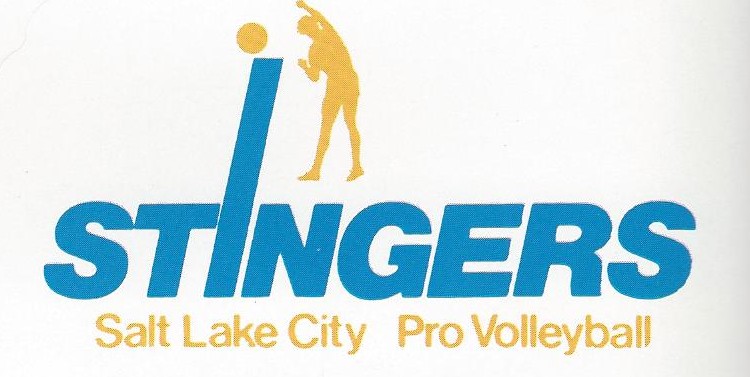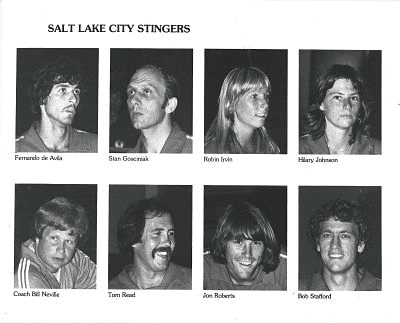International Volleyball Association (1979-1980)
Tombstone
Born: March 12, 1979 – The San Diego Breakers & Orange County Stars merge and relocate to Salt Lake City, UT1NO BYLINE. “Volleyball Franchise Comes to Salt Lake”. The Tribune (Salt Lake City, UT). March 13, 1979
Folded: July 15, 19802Baird, Joe. “Stingers, IVA collapse”. The Daily Utah Chronicle (Salt Lake City, UT). July 16, 1980
First Match: May 15, 1979 (L 3-1 @ Seattle Smashers)
Last Match: July 10, 1980 (W 3-1 @ Tucson Sky)
IVA Championships: None
Arena
The Salt Palace
Opened: 1969
Demolished: 1994
Marketing
Team Colors:
Ownership
Owner: Don Sammis
THE STADIUM STORE
UTAH SPORTS APPAREL
Check out Royal Retros collection of Utah-inspired sports apparel. Baseball, football, basketball, and hockey. High-quality replica jerseys, T-Shirts, hats, and more.
Background
The Salt Lake City Stingers were a brief entry in the International Volleyball Association (1975-1980), a West Coast-based co-ed pro volleyball league during the 1970’s. The team formed in early 1979, announced as the merger of the former Orange County Stars and San Diego Breakers franchises. Some IVA teams played in high school arenas, the Stingers played their home matches in the 12,000-seat Salt Palace, which was also home to the Jazz of the NBA, newly arrived from New Orleans.
For the 1979 season, the Stingers signed a pair of top Olympians in Fernando de Avila (Brazil) and Stan Gosciniak (Poland). Gosciniak was one of the world’s premier setters. But the Stingers would lose Gosciniak midway through the season after the Communist government of Poland called him home to coach a university team. The Stingers finished 17-23 and out of postseason consideration.
In August 1979, The Deseret News reported that the Stingers averaged about 2,000 fans per match with about 400 season ticket holders. These were relatively strong numbers by IVA standards and good enough for the team to plan on a second season.
1980 Collapse
The IVA limped into its sixth season in May 1980 buffeted by a host of existential crises. The league incurred a black eye in 1979 when federal agents arrested the owners of the Denver Comets club for drug trafficking. The Carter administration’s decision to boycott the 1980 Moscow Olympics following the Soviet invasion of Afghanistan deprived the sport of a major promotional platform that IVA investors looked forward to for years. And finally there was the condition of the franchises themselves. Four of the IVA’s seven clubs were basically out of money as the 1980 season approached. The Seattle Smashers club folded just days before the 1980 season opened, forcing the schedule to be re-worked.
By July 1980 the IVA was in its death throes. The Stingers played their final match on July 10th, 1980 on the road in Tucson, Arizona. The victory gave the Stingers a 13-11 mark and sole possession of first place in the IVA’s Western Conference. The following day the Stingers refused to travel to Colorado for a match against the Denver Comets. Stingers management cited the the insolvency of the league’s Albuquerque, San Jose and Santa Barbara franchises. With only Denver, Salt Lake & Tucson prepared to continue with the season’s second half, there seemed no reason to throw good money after bad.
Losing the Stingers was the final nail in the coffin for the IVA. The league quietly called it quits several days after Salt Lake’s withdrawal.
Voices
“We were probably the most solvent team. Not because we were selling a lot of tickets, but because of the deep pockets of our owner, a San Diego-based real estate mogul named Don Sammis. It was Don Sammis who, after the IVA folded, continued to be a benefactor of volleyball, attracting the USA men’s volleyball team to San Diego to train for the 1984 Olympics.”
-Tony Lovitt, General Manager 1979-1980 (2011 FWiL Interview)
Links
##



